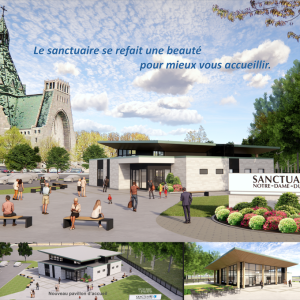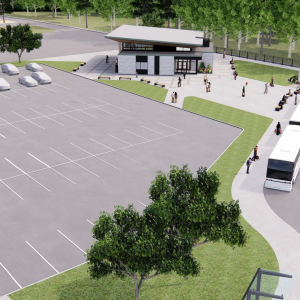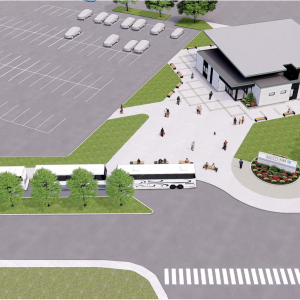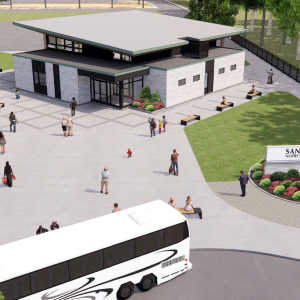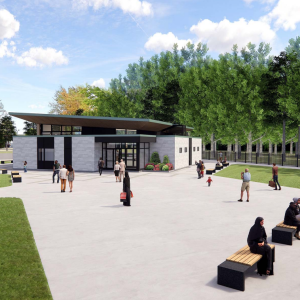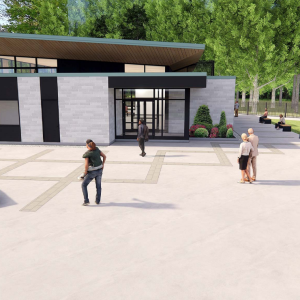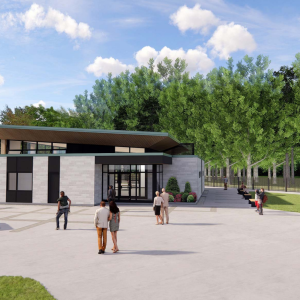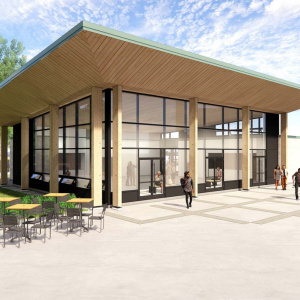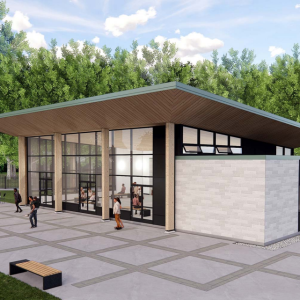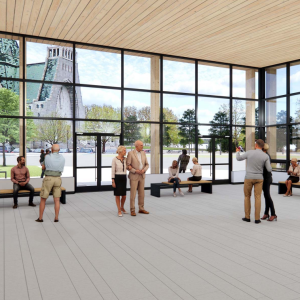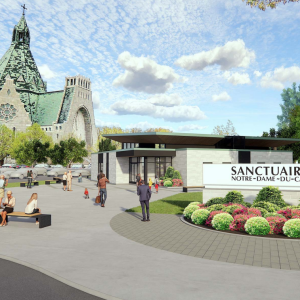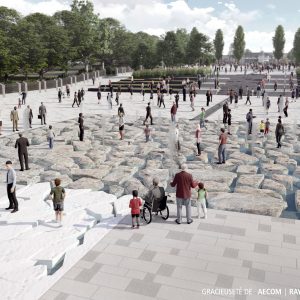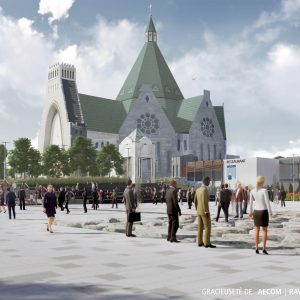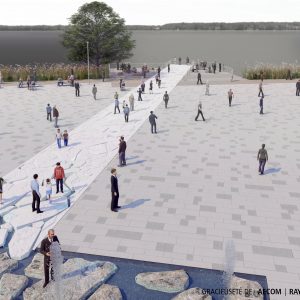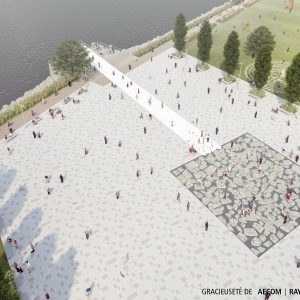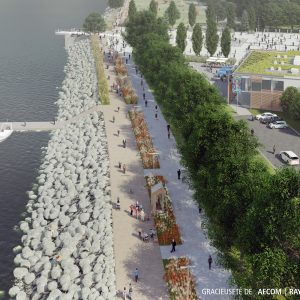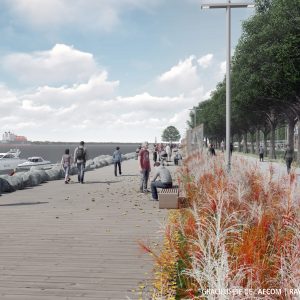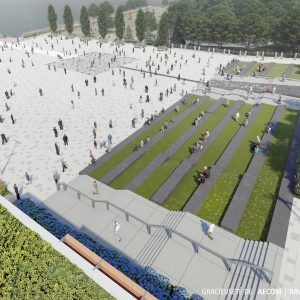Development and restoration project
Development and restoration project
Our Lady of the Cape Shrine is a place that contributes on many levels. It is a haven of peace and a spiritual beacon open to the world. Our Lady of the Cape Shrine is a major tourist attraction in the Mauricie region, as well as a venue for cultural events. It is also a living environment with a significant social contribution, and a heritage site with over 130 years of history. The Shrine is a source of collective pride that is relevant to present and future generations. With its new facilities and renewed programming, Our Lady of the Cape Shrine hopes to attract a broader and more diverse clientele.
CONCEPT OF DEVELOPMENT
This project is carried out by Raymond Chabot Grant Thornton, in collaboration with the architectural firm AECOM and aims to address the following development key subjects:
A user-friendly outlook of the site
The mission of the Shrine is to feature a welcoming haven of peace and a spiritual beacon. Improving the overall comfort of the site and an appropriate welcoming outlook (welcome pavilion) will fulfill the Shrine mission.
Highlighting the spirit of the place
The development project will shed light on the meaning and character of each space, sacred or otherwise and amplify the experience and to attract a more diverse audience.
The opening on the river
The opening on the river is the pride of the Cap-de-la-Madeleine sector of Trois-Rivières. Valuing the river’s coastline is close to the heart of the local community. Reclaiming the site’s of exceptional beauty will include a natural agora, an incomparable 1879 ice bridge experience and a breathtaking view of the river.
At the natural agora, conferences and attractions will be held.
The definition of the visitor’s journey
Whether you are a tourist, a neighbour of the Trois-Rivières community or a pilgrim, the project will aim to welcome everyone in a unique and adapted way with various itineraries.
Monetization of the site
For the long term, the current condition of the Shrine is unable to carry out its mission. The project will increase revenues and diversify revenue sources while remaining accessible to all. The development will ensure the sustainability of the work for future generations.
THE BENEFITS
This structuring project will have significant economic impact for the city of Trois-Rivières, the Mauricie region and Quebec. Over the next 10 years, it is estimated that more than 700,000 visitors will visit every year. An estimated 353 jobs created or maintained during the construction phases, 104 jobs will be supported every year and an impact of nearly $90 million on Quebec’s GDP. As well, this project will ensure the sustainability of the heritage, preserve the environment and consolidate the financial base of the organization. Our new facilities for a renewed programming of Our Lady of the Cape Shrine will attract a wider and more diverse audience.
Beyond the figures, Our Lady of the Cape Shrine will become a lever for the well-being of neighboring populations by provinding quality spaces for families, making the river accessible and offer a place of silence and meditation to seekers of meaning and sacredness.
THE FINANCING
To carry out this innovative $40 million project, the organization provides public/private funding. Presently, the Shrine was awarded the following amounts :
- $3,000,000 per Développement Économique Canada (DEC)
- $15,600,000 from ministère du Tourisme du Québec, the first $3,000,000 of which will be used for the first phase of the development and restoration project
- $700,000 from the Conseil du patrimoine religieux du Québec for masonry work in the restoration of the basilica
- $360,000 per years over the periode of 20 years from the City of Trois-Rivières
Further discussions are in progress with other departments and councils to seek their support and potential financial participation. More announcements to follow!
THE 4 PHASES OF THE DEVELOPMENT AND RESTORATION PROJECT
Phase 1: Welcoming Pavilion and start of Basilica Restoration
Phase 2: Garden Project
Phase 3: Camping and Biodiversity
Phase 4: Wharf Repairs and River Access


